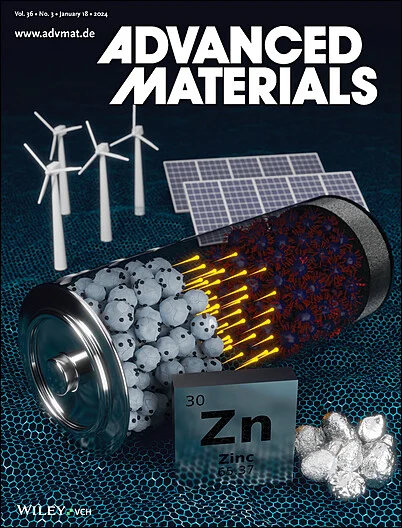Unlocking the Sodium Storage Potential in Fluorophosphate Cathodes: Electrostatic Interaction Lowering Versus Structural Disordering
IF 27.4
1区 材料科学
Q1 CHEMISTRY, MULTIDISCIPLINARY
引用次数: 0
Abstract
Electrostatic interaction and Na+-ordering are identified as two possible kinetic constraints in determining the Na+ diffusivity in Na3V2(PO4)2O2F (NVPOF), a representative polyanionic-based cathode material for sodium-ion batteries. As both factors are compositionally related and intertwined, isolating individual factors to pinpoint the dominant one is essential yet challenging for achieving the full electrochemical potential of NVPOF. Herein, NVPOF doped with Zn2+ or Mg2+ is developed to study the relative influence of the electrostatic interaction and structural disordering on the Na+ diffusivity and thus Na+ storage performance. The crystal structural analysis and theoretical modeling reveal that a limited amount (0.6 at% of Na) of Zn2+ doped at the Na-site with Na-vacancies created, while a ten-fold higher Mg2+ doped at both the Na- and V-site, which introduces additional Na+ for charge compensation. As a result, compared to the Zn2+ doped counterpart, the Mg2+ doped NVPOF cathode shows a Na+ diffusivity up to 3 times higher even encountering larger repulsive forces, and a much enhanced Na+ storage property. This work demonstrates the superiority of regulating the degree of order in the framework to address the defect formation energy of NVPOF, which is realized via doping and can be extendable to other polyanionic-based cathode materials.

求助全文
约1分钟内获得全文
求助全文
来源期刊

Advanced Materials
工程技术-材料科学:综合
CiteScore
43.00
自引率
4.10%
发文量
2182
审稿时长
2 months
期刊介绍:
Advanced Materials, one of the world's most prestigious journals and the foundation of the Advanced portfolio, is the home of choice for best-in-class materials science for more than 30 years. Following this fast-growing and interdisciplinary field, we are considering and publishing the most important discoveries on any and all materials from materials scientists, chemists, physicists, engineers as well as health and life scientists and bringing you the latest results and trends in modern materials-related research every week.
 求助内容:
求助内容: 应助结果提醒方式:
应助结果提醒方式:


